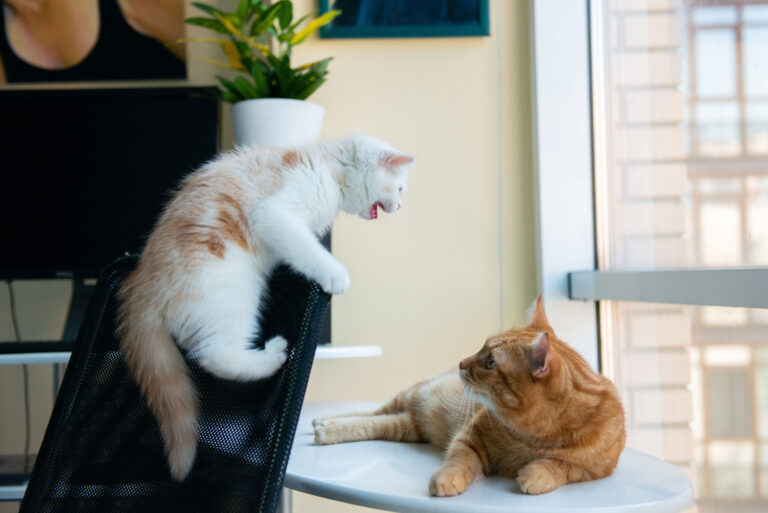Understanding Cat Behaviour: A Guide to Feline Body Language
Cats have long been mysterious and fascinating companions to humans. Their behavior is a complex tapestry of signals, and decoding the intricacies of feline body language can deepen the bond between humans and their furry friends. Whether you’re a seasoned cat owner or a novice, understanding cat behavior can help you navigate the unique world of these enigmatic creatures. In this guide, we’ll explore the nuances of feline body language to unravel the secrets behind your cat’s behavior.
1. Tail Talk
The tail is a cat’s most expressive feature, conveying a wealth of emotions. Understanding the messages behind different tail positions is key to deciphering your cat’s mood. For instance:
– A straight-up tail signals a happy and confident cat.
– A puffed-up tail indicates fear or agitation.
– A twitching tail might suggest excitement or irritation.
2. Ear Expressions
Cats use their ears to communicate subtle nuances in their feelings. Observing the positioning and movement of their ears can provide valuable insights:
– Forward-facing ears signal curiosity or excitement.
– Flat ears against the head suggest fear, anger, or submission.
– Twitching ears could indicate irritation or anticipation.
3. Eye Contact
A cat’s eyes are windows to its soul. The way they make eye contact can convey a variety of emotions:
– Slow blinking is a sign of trust and affection.
– Dilated pupils may indicate fear, excitement, or aggression.
– Staring without blinking may be a challenge or a sign of discomfort.
4. Whisker Wisdom
The positioning of a cat’s whiskers can reveal its mood and intentions:
– Whiskers pulled back against the face signal fear or aggression.
– Forward-facing whiskers indicate a content and relaxed cat.
– Rapid whisker movement may suggest excitement or anticipation.
5. Posture and Positioning
A cat’s body posture is a crucial element in understanding its state of mind:
– Arched back and raised fur signify fear or aggression.
– A relaxed, sprawled-out position indicates contentment.
– Crouched stance may suggest fear or readiness to play.
6. Vocalisations
Cats are known for their wide range of vocalizations, each serving a different purpose:
– Purring often signifies contentment, but it can also indicate pain or distress.
– Hissing and growling are defensive signals.
– Meowing can express anything from hunger and excitement to distress.
Deciphering your cat’s body language is an ongoing process that deepens the bond between you and your feline friend. By understanding these subtle cues, you can ensure a harmonious relationship with your cat, fostering a connection built on trust and communication.
So, the next time your cat communicates with you, take a moment to decode the message they’re sending—you’ll understand what’s going on and can avoid issues down the line!








